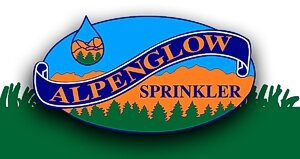Growing healthy viable plants is the goal of most homeowners and property managers as this invariably affects the property's habitability. After all, plants can provide shade, privacy, protection from the elements, and soil stabilization, as well as aesthetic beauty and charm. In order to maximize the health and vigor of a property's plant life, it is advisable to better understand the relationship that soil and water have on these plants.
It has been proven that plants don't need just nutrients, but also air and of course the correct amount of water within the root zone for optimal growth. Too much water and the plants' roots will decay from an anaerobic condition. Conversely, too much air (i.e. not enough water) will produce a decreased growth rate or possibly death if the permanent wilting point is surpassed. Balancing the introduction of water and air into the soil is the primary objective of the irrigation manager.
Soil is generally the term used for the surface soil or topsoil on a site where the majority of plants extract the nutrients and water necessary for growth. In the arid West, more specifically along the Front Range of Colorado, this top layer is predominantly mineral or inorganic in composition. In other words, these soils are very limited, if not mostly void, of any organic matter or humus. This, in turn, affects the suitability of the soil for the introduction of water and air into the soil, both of which are necessary for optimal plant growth.
Of course, the composition and texture of the soils within the Northern Front Range and even within a given community varies considerably. However, since some generalities can be made about the types of soil prevalent in our area, some entities, such as the City of Fort Collins, have passed legislation concerning the amending of soils to help in the health and vigor of plant life. More specifically, the City of Fort Collins mandates the introduction and tilling in of prescribed amounts of organic matter in the top 6-12 inches of the topsoil before the implementation of any new landscapes in order to encourage root growth. This promotes the availability of nutrients and the introduction of both water and air into the root zone of the affected soils.
`Many homeowners and property managers take on the job of an irrigation manager by themselves as a cost-cutting alternative. This can prove to accomplish just the opposite if the plant/soil/water relationship is not taken into consideration because both the health and vigor of the plants can be negatively impacted. Consequently, the application rates of the sprinkler zones and the various microclimates as well as the topography and layout of the landscape to be watered within a given site should be taken into account when a sprinkler system's schedule is formulated. However, all of these factors are influenced either directly or indirectly by the soils and the landscape plantings present on the site.
Generally speaking, the predominant clay soils of the Front Range take water in at a very slow rate, but also "let go" of this plant-available water at an equally slow rate. The compaction of these soils adds significantly to this decreased rate of water and air availability. It is for this reason, the practice of mechanically aerating the soils along the Front Range is commonly accepted in an attempt to increase the availability of both air and water in the surface soils.
The proper scheduling of any irrigation system goes hand in hand with the knowledge and understanding of the soils present on the site. No matter how dialed-in a sprinkler system's schedule may seem, the manager of any irrigation system needs to be observant of the landscape's health, as optimal scheduling is a matter of continually tweaking the start and run times. For example, the perceptive irrigation manager is aware that Kentucky bluegrass turf is a good indicator of proper irrigation scheduling as it tends to turn a bluish tint when it begins to reach its wilting point. Knowing this, he/she allows the bluegrass lawn to be watered only once the turf begins to turn this off-green color. This in turn helps promote a deeper root growth as the turf searches for more water. Consequently, a healthier turf is achieved as the root zone expands downward and allows for the absorption of more nutrients and water. This is especially effective during a prolonged drought, either during the off-season when the irrigation system is turned off or whenever water restrictions are in force.
In summary, Alpenglow Sprinkler is constantly striving to reach that optimal balance between saving water and money(!) for our clients while providing just enough water for the optimal health of our customer's lawns and landscape plants. We appreciate the opportunity to work on your sprinkler systems and help keep your landscapes healthy!
